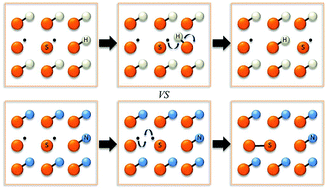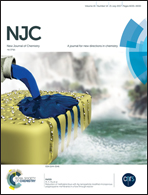Evidence for the contribution of degenerate hydrogen atom transport to the persistence of sulfanyl radicals anchored to nanostructured hybrid materials†
Abstract
Nanostructured functionalized silicas were used as a platform to compare the behaviour of anchored arylsulfanyl radicals depending on the nature of the precursor (diazene/thiol). The radicals generated from thiols exhibit higher half-lifetimes than the radicals generated from diazenes. The ability of thiols to maintain the sulfanyl radical density via degenerate hydrogen atom transfer is likely to account for this sharp difference.



 Please wait while we load your content...
Please wait while we load your content...